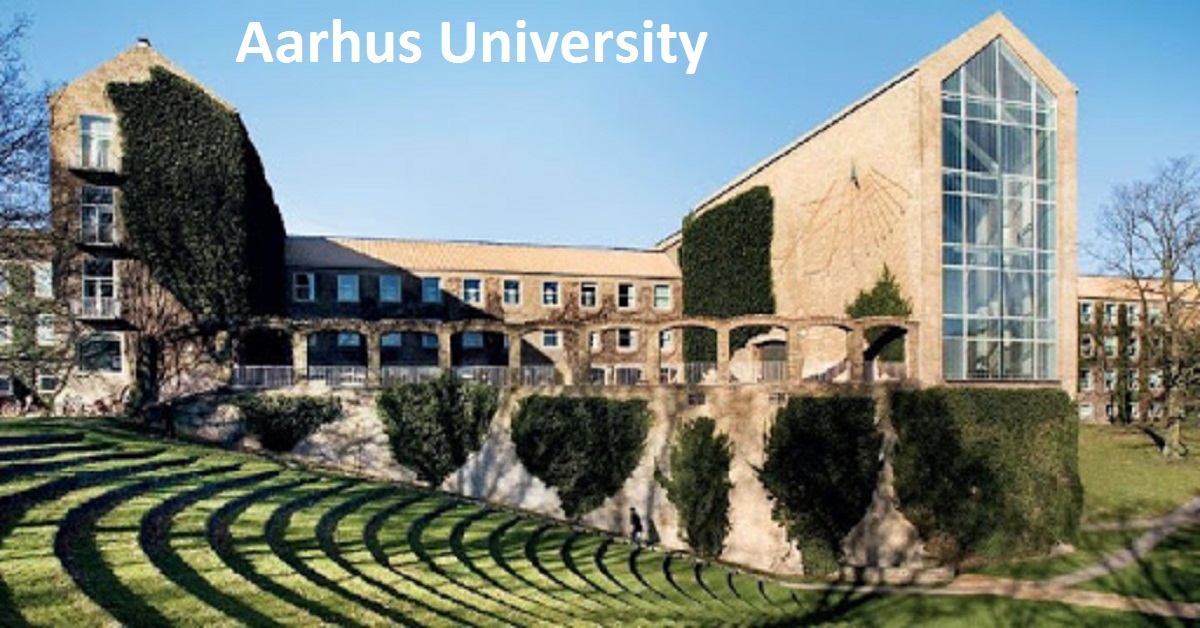
Applications are invited for a PhD fellowship/scholarship at Graduate School of Natural Sciences, Aarhus University, Denmark, within the Chemistry programme. The position is available from August 2022 or later.
Background: Solvation of alkali ions in liquid helium
Solvation is a ubiquitous process in the natural sciences as well as in our daily life. At the atomic and molecular level, solvation is the process of attraction and binding of solvent particles (atoms or molecules) to solute particles (molecules or ions). A particularly well‐known example is the solvation of Na+ and Cl‐ ions occurring when salt is poured in water. Almost any textbook on general chemistry shows how water molecules bind to the Na+ ion and form a solvation shell consisting of five or six water molecules. Strikingly, no experiment has hitherto explored the primary steps of solvation, i.e. the gradual binding of solvent particles to a solute molecule or ion on the natural atomic time scale.
Recently, we have developed a method that allows such studies using liquid helium to solvate alkali ions. The studies are made possible by placing a single alkali ion on the surface of a nanometer‐sized droplet of liquid helium and initiating the solvation by instantly forming an alkali cation by ionization with a femtosecond pump laser pulse. The time evolution of the solvation process is followed by pushing the alkali (Alk) ion plus the number of He atoms that may have bonded to the ion out of the droplet at a series of times, t, after the ion is formed. The push‐out is delivered by a timed Coulomb repulsion starting when a molecule, placed in the center of the droplet, is ionized at time t and the number of He atoms attached to the ion is determined by measuring the mass and velocity of the Alk(He)n + ion.
The first experiments, performed with Li+ and Na+ ions, show that the solvation occurs at a rate of one He atom binding every 0.7 ps for the first 10‐12 He atoms. The data also enabled determination of the timedependent distributions of how many He atoms are bound to the ions. For Na+ ions the number distributions are Poissonian while for Li+ they are highly irregular showing a striking preference for binding 6 He atoms, which we interpret as a highly stable octahedral solvation complex structure.
Scientific goal of the PhD project
With a starting point in these recent results, the objective of the new PhD project is to:
- Explore solvation dynamics for ions of other alkali or alkaline earth ions
- Explore the long‐time destiny of metal ions created at the surface – notably towards forming complexes with molecules places in the center of the droplet.
Time‐resolved solvation dynamics
The first major research objective is to measure solvation dynamics of the other alkali ions, that is K+, Rb+ and Cs+. The technique will be similar to the one demonstrated for Na+ and Li+, i.e. initiate solvation with a fs pump pulse and probe the dynamics by ionizing the molecule in the center with a fs probe pulse. So far, the probe process has been nonresonant strong‐field ionization but it may be advantageous to develop (1+1)‐photon resonant ionization. The next major objective is extending the method to ions of alkali earth atoms. Some of the alkaline earth metals are known to reside on the surface of He droplets. It will be very interesting to study if their solvation dynamics differ from that of the alkali ions. A particularly interesting aspect is the fact that alkaline earth atoms have two valence electrons. Thus, it should be possible to explore solvation of divalent cations like Ca2+ or Ba2+. It may be necessary to form these doubly charged ions by using resonance effects in the multiphoton ionization process by the pump pulse.
Post‐solvation dynamics
Our first experimental studies on Li+ and Na+ show that these ions are fully solvated after 10‐20 ps. This agrees well with time‐dependent density functional simulations. An intriguing question is: What happens to the solvated ion on longer time scales? For Na+, the TDDFT simulation show that the ion with its solvation shell(s) of He atoms moves very slowly into the droplet. Even after 200 ps, the solvated ion remains close to the droplet surface. For Ba+, similar TDDFT simulations show that the solvated ion moves much to the center of the droplet in about 30 ps and continues to slush back and forth inside the droplet. Strikingly, for Cs+, TDDFT simulations showed that the ion never becomes fully solvated. Instead after 80‐90 ps, the Cs+ ion desorbs from the droplet as a He snowball containing about 75 He atoms.
It would be most interesting to explore this post‐solvation dynamics and the Coulomb explosion method may offer a unique opportunity for doing so. Again, the idea would be to place a molecule in the center of the droplet and ionize this molecule at different times. If the solvated alkali or alkaline earth ion moves into the droplet, i.e. approaches the molecule in the center, more Coulomb energy will be released upon ionization of the molecule leading to increasingly higher kinetic energies of the two recoiling cations. On the other hand, if the Cs+ ion and its shell of He atoms move away from the droplet, we expect a gradual decrease of the kinetic energy of the Cs(He)n + ion. In particular, using Coulomb’s law, this kinetic energy can be converted to the distance between the Cs+ ion and the molecule in the center, i.e. such measurements should allow us to direct determine the distance from the departing Cs+ ion to the droplet and its velocity.
Another highly interesting aspect is the fact that if an ion moves towards the center of the droplet and a molecule is located there, the cation and the molecule can form a complex. A particularly interesting class of complexes is that of cation‐ interactions. These interactions are known to be important for protein structures, molecular recognition and organic reactions including catalysis. If the cation is that of an alkali ion, the interaction is noncovalent, yet the bonding energy can be on the order of 1 eV, i.e. almost as strong as a covalent bond. Preliminary experiments in our laboratory show that such complexes, for instance Li+‐benzene form inside He droplets. A prominent goal of this PhD project is to explore if the formation process can be followed in real time and if it is possible to determine the structure of the complex created. Key to such studies, we believe, is to detect correlations between fragment ions when the complex is Coulomb exploded by an intense probe pulse – possibly pre‐fixing the complex in space by laser‐induced alignment to enhance the information content of the momentum vectors of the recoil ions. When an alkali ion forms a complex with e.g. a benzene molecule, about 1 eV of binding energy must be dissipated by the surrounding He solvent. It may be possible to directly measure how fast this energy dissipation takes place by recording the angular covariance of the recoil ions.
Key milestones
- Record time‐resolved solvation dynamics of K+, Rb+, Cs+
- Develop resonant multiphoton double ionization of alkaline earth atoms
- Set up new amplified femtosecond laser system and new optical setups
- Record time‐resolved solvation dynamics of alkaline earth ions – singly and doubly charged.
- Form molecule – cation complexes and identify correlations of fragment ions
- Femtosecond time‐resolved measurements of complex formation and energy dissipation
For technical reasons, you must upload a project description. When – as here – you apply for a specific project, please simply copy the project description above, and upload it as a PDF in the application. If you wish to, you can indicate an URL where further information can be found. Please note that we reserve the right to remove scientific papers, large reports, theses and the like.
Qualifications and specific competences:
Either
1) Completed one year of a 2-year Master program in Chemistry, Physics or Nanoscience.
or
2) Candidates who are expecting to complete their bachelor degree summer 2022.
IMPORTANT: If you want to be considered for the position, contact Henrik Stapelfeldt at henriks@chem.au.dk, prior to submitting an application.
Place of employment and place of work:
The place of employment is Aarhus University, and the place of work is Department of Chemistry, Aarhus University, Langelandsgade 140, DK-8000 Aarhus C., Denmark
Contacts:
Applicants seeking further information for this project are invited to contact:
Professor Henrik Stapelfeldt, e-mail: henriks@chem.au.dk
How to apply:
For information about application requirements and mandatory attachments, please see the Application guide. Please read the Application guide thoroughly before applying and note the GSNS language skills requirement.
When ready to apply, go to https://phd.nat.au.dk/for-applicants/apply-here/ (Note, the online application system opens 1 March 2022)
- Choose May 2022 Call with deadline 1 May 2022 at 23:59 CEST.
- You will be directed to the call and must choose the programme “Chemistry”.
- When filling in information about the project, please choose: “Femtosecond and atom-resolved solvation of ions in liquid helium – and beyond (Fasilh)” in the dropdown menu in the box named “Study”.
Please note:
- The programme committee may request further information or invite the applicant to attend an interview.
- The project will only be initiated if final funding (from the graduate school/the faculty) is secured.
Aarhus University’s ambition is to be an attractive and inspiring workplace for all and to foster a culture in which each individual has opportunities to thrive, achieve and develop. We view equality and diversity as assets, and we welcome all applicants. All interested candidates are encouraged to apply, regardless of their personal background.




